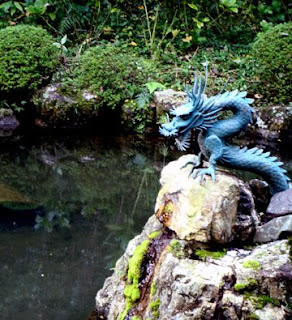
Our latest adventure took us to Amanohashidate – otherwise known as the “bridge to the heaven”. For some reason it has been ranked as one of Japan’s top three scenic places to visit. Now, I must admit, winter is not the greatest time to see things at their most gorgeous. Also, the low lying clouds defeated the best photographer. The driving rain didn’t help either and, come to think of it, neither did the freezing cold at night.
The best way to view the bridge is from the top of the hill on one side or the other. There is, of course, a chairlift available to take you up to whichever top you want – we, of course, did both. It gives you a better view of the bridge – and, of course, the opportunity to view it. Now, according to tradition, one is supposed to bend over and look at it between your legs – thus giving you a view of the bridge “heading for the heavens”. It’s traditional and has been for thousands of years (and here, I’d believe it).





















































